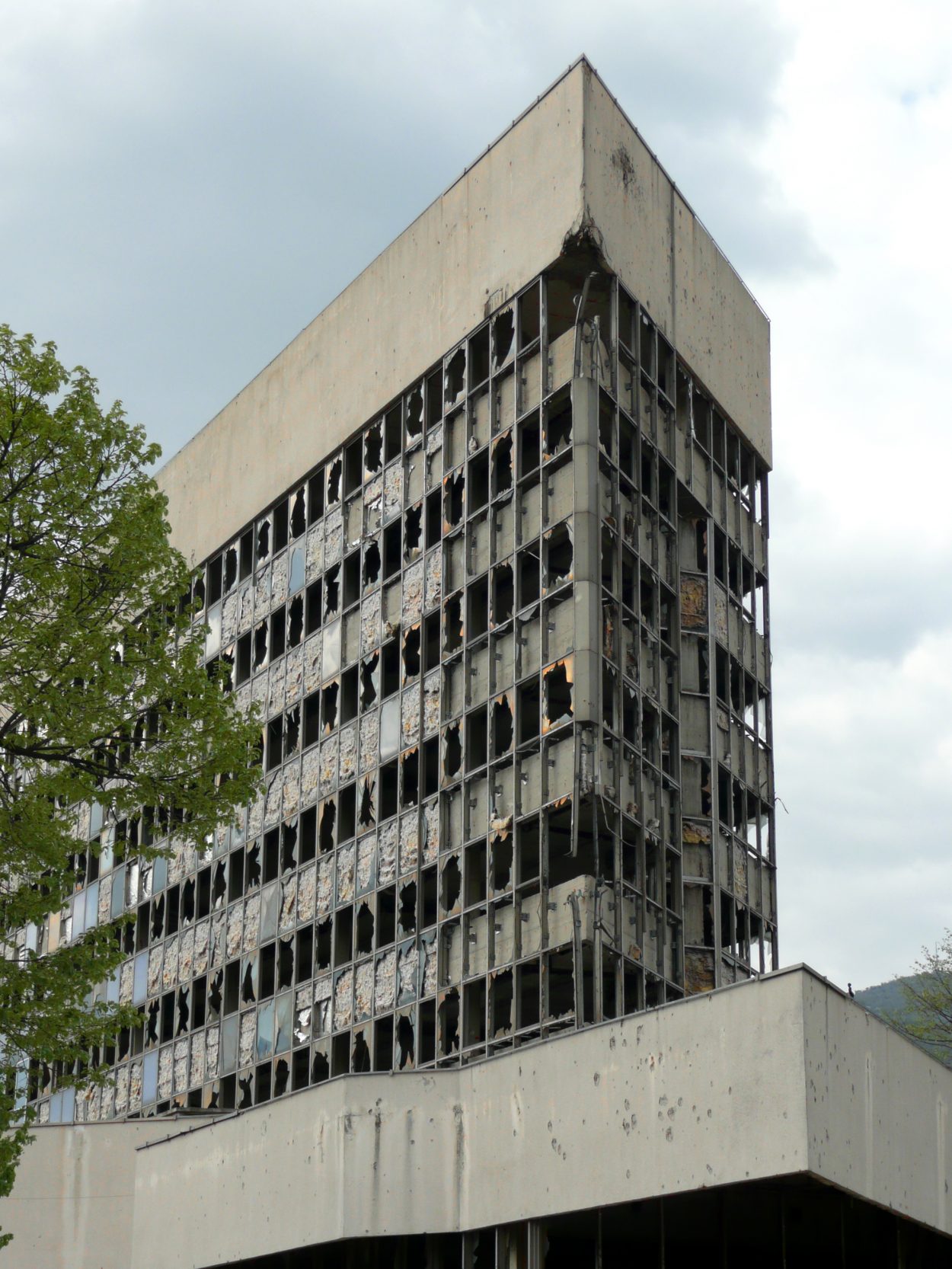Published
Gogo Penguin + Koyaanisqatsi, and the memory of a tower in Bosnia and Herzegovina
Last night I went to a live screening of Koyaanisqatsi at EartH in Hackney with GC. I knew Gogo Penguin would be playing live, but I didn’t realise they’d be playing their own re-scoring! Pretty impressive, both the execution and to even take it on considering the epic proportions of Philip Glass’s original score. The synchronisation of the rhythm and the visual was maybe not quite as intricate as the original but it was expertly handled, particularly for a live performance. Most of the time the pace was frenetic, frantic. There weren’t quite as many despairing moments as in Glass’s score, but the overall vibe was very similar.
I need to listen to more Gogo Penguin and definitely need to watch the original film, before this I’d only seen small bits of it.

Photo taken 15 April 2009
The second half of the film includes many clips of derelict housing projects and other buildings. Those clips unearthed a ten-year-old memory of a tower I’d seen when visiting a good friend in Mostar, Bosnia and Herzegovina. The angular concrete structure loomed over the playground in Park Zrinjevac. It was an inanimate casualty of the catastrophic conflicts that consumed the region in the early 1990s, abandoned but clinging to a few remnants of glass and insulation.
That much I knew from the pocked concrete, but I didn’t know the specific role it played in the war until today. Once called the Ljubljanska Banka Tower, it’s now known to some as the Sniper’s Tower. It was used by gunmen targeting people below during the 1993–1994 Siege of Mostar. The multiple sieges led to the widespread destruction of the city, and almost 100,000 people fled.
I searched everywhere online for pre-war photos of the tower but couldn’t find any, just this photo taken a few months after I was there. The photographer captured it in much better light than I, the photo hints at the building’s formerly mirrored, golden facade. It still stands from what I gather, but the exterior structure has been removed and the entries have been blocked off. Graffiti artists use it, and urban explorers try to have a poke around. It looks like a skeleton in the more recent images I’ve seen. I’m not sure I’d feel comfortable going in.